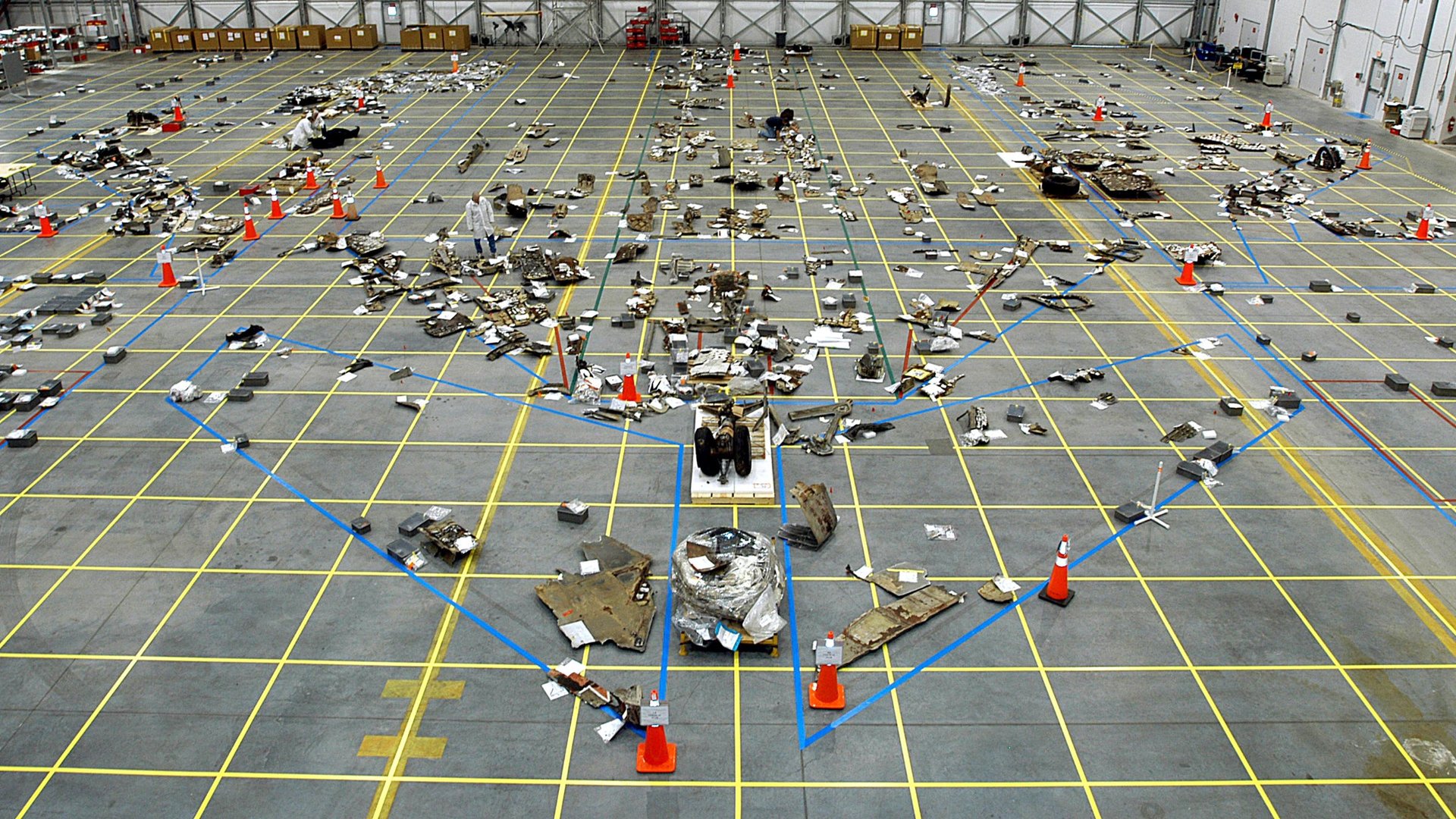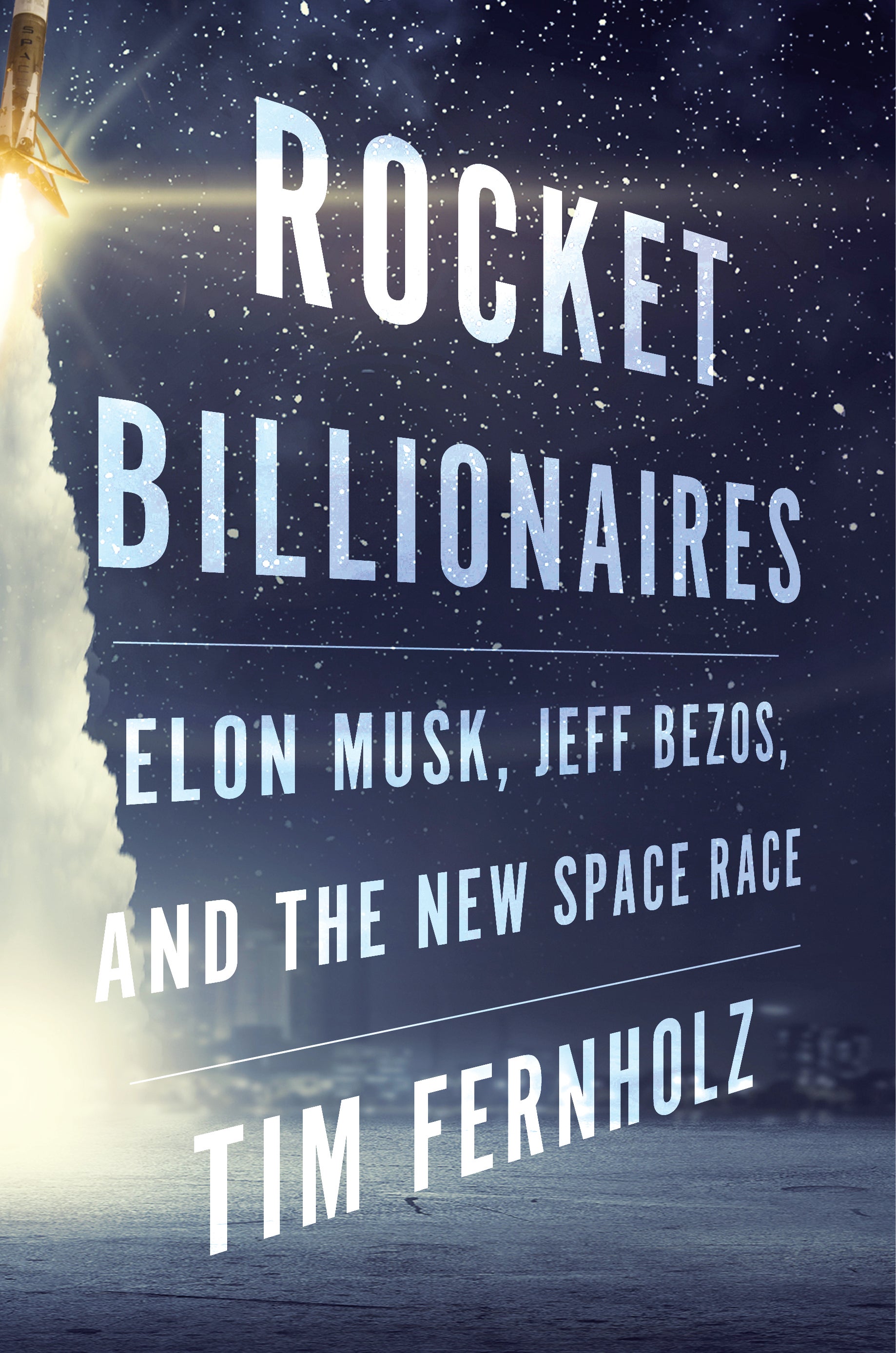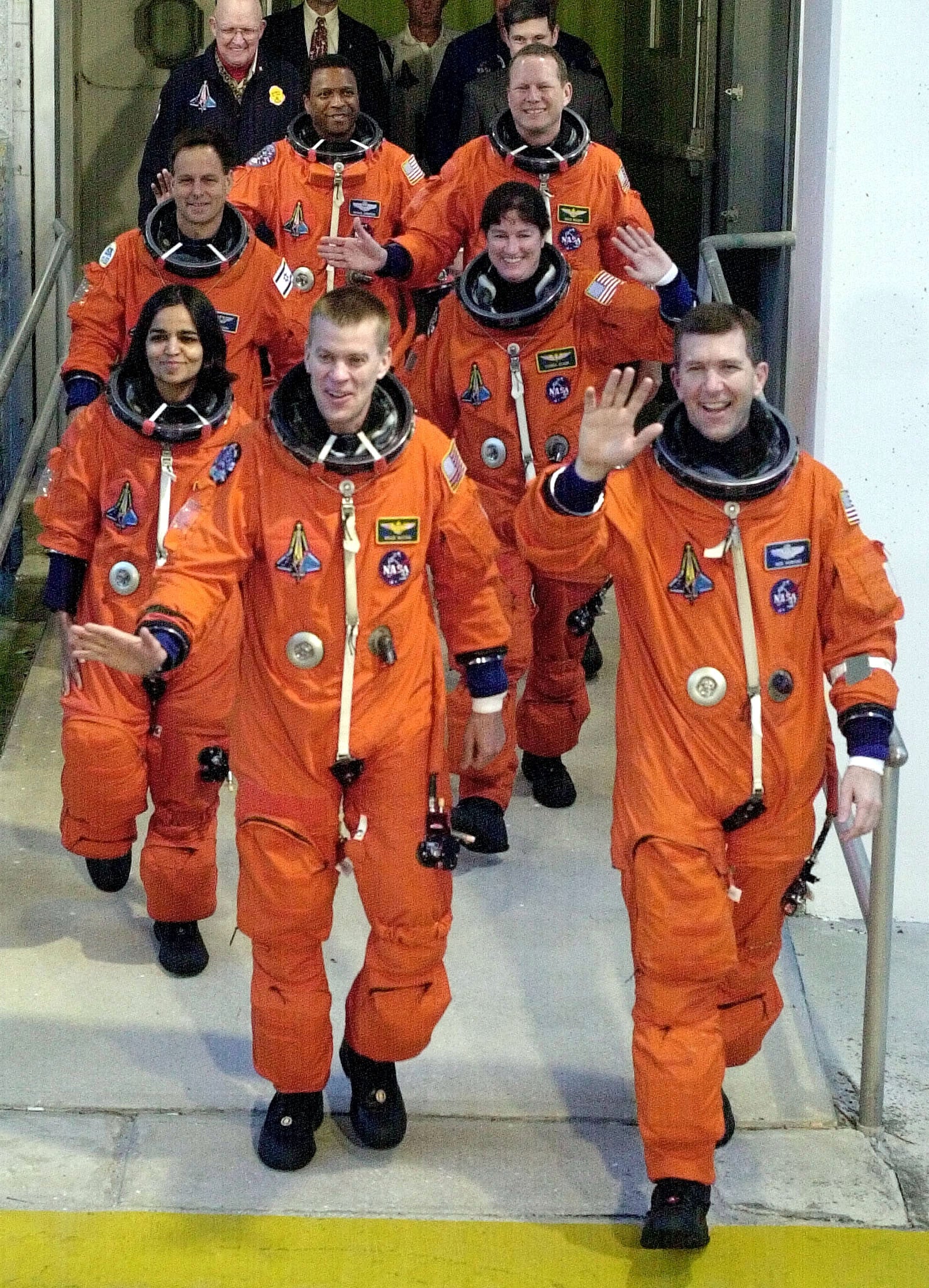How the Columbia tragedy began the age of private space travel
The year 2003 began with a brutal object lesson in the difficulties of flying humans into space.


The year 2003 began with a brutal object lesson in the difficulties of flying humans into space.
Early on the morning of Feb. 1, the space shuttle Columbia appeared to observers at the Los Angeles headquarters of SpaceX as a white streak across the sky. It flew at 23 times the speed of sound, more than 200,000 feet above the earth. The seven people on board had just completed a two-week scientific mission in orbit. But their attempt to return to earth would be a death sentence.

On the ground, in the control room at Cape Canaveral, the NASA team awaiting the returning mission watched as heat sensors in the wing failed—it could have been a typical malfunction. Next, sensors monitoring the landing gear inside the wing blinked out. Flight control then lost all signals from the orbiter.
In truth, all of this wasn’t uncommon during reentry. Minutes passed. The flight controllers assumed that the sensors were just on the fritz. They looked for radar evidence of the orbiter. It should have begun its descent toward the enormous runway at Kennedy Space Center by now. A cell phone rang. Cable news was showing imagery of the white streak across the sky becoming multiple streaks. Columbia was lost.
The flight director turned to a roomful of NASA staffers and invoked the dreaded words that begin the evidence quarantine process following any aerospace disaster: “Lock the doors.”
The inquiry board that examined the Columbia disaster didn’t mince words in assessing the explosion, which left debris scattered across two states and two thousand square miles. More than just an engineering failure and a tragic accident, Columbia was a blinking red warning signal for an institution that had seemingly lost its way. NASA itself was failing.
An excerpt from Tim Fernholz’s book Rocket Billionaires: Elon Musk, Jeff Bezos, and the New Space Race, now available for pre-order.
The physical culprit behind the destruction of the orbiter was not a meteoroid or errant space hardware encountered while in orbit. Because the crew included Ilan Ramon, the first Israeli astronaut, some observers feverishly speculated about terrorist attacks or sabotage. In fact, the cause of death was a piece of foam, about the size of a beer cooler. It weighed perhaps two pounds.
The foam was part of the space shuttle itself. One of the design compromises in the creation of the shuttle was an enormous orange external tank that carried the fuel and liquid oxygen used to power the orbiter into space, before being jettisoned. In flight, the shuttle would roll and effectively fly upside down, with the tank “above” and in front of it. This was controversial, since it exposed the astronauts to danger. “I thought it was the dumbest thing I’d ever seen,” one future NASA administrator said of the shuttle’s rollout.
When planning this maneuver, NASA engineers worried that the ice that formed on the metal surfaces of the external tank when it was filled with supercooled liquid propellants could fall on the orbiter and damage it. To prevent ice damage, they covered the fuel tank with spray-on foam insulation. Where the tank was joined to the rocket with aluminum spars, they sprayed over the joints with foam and cut it to form an aerodynamic shape. Experience had taught NASA that these “foam ramps” could break off during launch, but the launch managers initially didn’t see this as a flight risk. Instead, it was something they had to remember to replace while refurbishing the reusable vehicle.
This was an enormous mistake.

As Columbia took off in January 2003, the foam ramp broke off its external tank almost a minute and a half into flight. It hit the left wing moving about five hundred miles per hour and tore through the protective heat shielding. Exactly how deeply, we have no idea—NASA officials refused to ask their colleagues at the Pentagon to peek at the wings with a spy satellite or a ground telescope, and no astronauts were sent on a space walk to assess the damage.
Despite serious misgivings among the engineers on the ground, the mission’s managers did little to address the problem or even warn the astronauts about the enormous risks they were taking simply by coming home. They crossed their fingers and hoped for the best. Even if an effort to inspect the damage had been made, there was little that could have been done to repair the problem in flight. During its inquiry, the Columbia Accident Investigation Board concluded that a hasty rescue mission with another orbiter might have saved Columbia’s crew in time—though it would have faced the same risk from falling foam.
Foremost among the reasons that NASA didn’t go into full rescue mode was that the mission manager for Columbia was also in charge of preparations for the next mission. The investigators judged that this was a major conflict of interest, since any delay to address the debris damage or recognize the threat of the foam ramps would halt preparations for the next mission. The space shuttle team was reluctant to adopt any new delays at a time when the space agency was under intense pressure to complete its share of the ISS.
For all the thousands of hours spent inspecting engines, worrying about filters to keep the mix of breathable air right in the orbiter, and even stationing extra security around the launch site in case of a terrorist attack, NASA had missed the danger posed by the anti-ice foam. And not just missed it, but forgotten about it, according to the accident investigators: Early in the life of the space shuttle, foam debris was considered a serious problem. As flight after flight went off without a hitch, engineers got complacent and didn’t examine what might happen in a worst-case scenario.
The investigators identified a disturbing number of parallels between the destruction of Columbia and the Challenger disaster, seventeen years earlier, where a rubber ring had been the cause. In both cases, worried engineers were challenged by managers to prove conclusively that their vehicle was unsafe, without being given the resources to do so. Building an institution that performed the complex engineering tasks of spaceflight, on budget and on schedule, while avoiding complacency and buck-passing, still remained beyond the reach of the US space program.

Heads rolled at the space shuttle program that year after the investigation was completed. The space community shared a collective sadness, tinged with a fear that the tragedy would also sour the public on expensive human spaceflight programs.
Though Columbia was the final nail in the space shuttle program’s coffin, ensuring that there would be no appeal of cancellation in 2010, it didn’t change the shape of the industry. In a sense, the lessons of 1986 and 2003 were the same: NASA simply did not have a cheap, reliable space vehicle. Nor did it seem likely that one would appear soon: as the accident investigators noted, “The changes we recommend will be difficult to accomplish—and will be internally resisted.”
The place to be in America if you wanted to solve the problem of cheap access to space was SpaceX’s small factory in El Segundo, California.
“I was trying to figure out why we had not made more progress since Apollo,” SpaceX founder ElonMusk told a roomful of Stanford students in 2003, a few months after the Columbia disaster. “We’re currently in a situation where we can’t even put a person into low earth orbit. That doesn’t really jell with all of the other technology sectors out there. The computer that you could have bought in the early seventies would have filled this room and had less computing power than your cell phone. And so just about every sector of technology has improved. Why has this not improved?”
To Musk, the now grounded space shuttle was “incredibly expensive and really quite dangerous.” Boeing and Lockheed’s government-designed plan to build new rockets was likely to exceed both its bloated, multibillion- dollar budget and its timeline. The Soyuz, while “considerably cheaper, considerably safer” than US vehicles, was unlikely to prompt a revolution in space access as long as it was owned by economically flailing Russia. The way forward to “ultimately surpass all of that stuff is entrepreneurial space activities, where things are led by the spirit of free enterprise.”
The stockholders and management of the major space contractors who actually produce all this hardware may not appreciate Musk’s characterization of their enterprise as something other than free. Yet their own employees (or any economist) could quickly identify the problem with that argument: The prime contractors were frequently monopolists, locking down control of a single aerospace franchise, and in turn they frequently served a single customer: the government. This gave them the ability to demand contracts with a guaranteed profit, which critics of these arrangements say undermines the very profit-maximizing urges that drive innovation.
Cost-plus contracts are extremely good for shareholders, but they shouldn’t be mistaken for competition. In a few years, Musk would become perhaps the only aerospace CEO to insist on fixed-price government contracts, and SpaceX would become a dramatic example for procurement reform.
With the space shuttle grounded, the International Space Station (ISS) unfinished, and expendable orbital launch vehicles costing more than $150 million per flight, there was little opportunity for small companies or researchers to test hardware in space, even as the miniaturization of electronics made such experiments increasingly attractive. SpaceX’s engineers thought a low-cost alternative that could bring satellites to orbit on demand would quickly find a market, and they wouldn’t have to worry about competing directly with larger vehicles built by Lockheed Martin, Arianespace, and the Russian aerospace industry.
The first SpaceX rocket was designed to be what a tech start-up would call a “minimum viable product”—basically, the cheapest thing you could build that would attract paying customers. From there, the company could iterate and expand its offerings. Their minimum viable product would be called the Falcon 1. “It was to figure out the basics of rocketry,” Musk told me of the project. “We didn’t know anything. I’d never built anything before.”
Outside observers who worked with SpaceX would quickly notice a unique culture taking root at the company, where eighty-hour weeks were the norm. “At Lockheed Martin, it would never occur to a subcontract manager to say, ‘I don’t like these bids. I think we could build this in-house for a third of the price,’ ” a veteran aerospace executive told me. “They’d be met by a panel of engineers that would say, ‘This company does nothing but make rivets, and you’re telling me we can make an individual single rivet for half the price?’”
Conversely, a NASA executive who spent years working with SpaceX remembered employees saying, “‘Well, we could go buy this from this vendor, but it’s like $50,000. It’s way too expensive; it’s ridiculous. We could build this for $2,000 in our shop.’ I almost never heard NASA engineers talking about the cost of a part.”
At SpaceX, however, Musk expected every single cent of his personal investment to be spent wisely, with speedy results. The engines are the most important and expensive part of any rocket, and at SpaceX they were the responsibility of Tom Mueller. “When I started developing the Merlin engine, the conventional thinking was ‘Only governments can develop rockets,’” he told a group of students later.
In the wake of Columbia, many in the space community were distressed with the slow pace of NASA activity and the lack of anything new. The space shuttle and the construction of the space station had dominated virtually everything else at the agency since the early nineties. Inside NASA, thousands of talented engineers and researchers pointed the finger back at lawmakers, who, after all, set NASA’s priorities and issued its budget, which were often contradictory.
But others saw a new generation of entrepreneur-driven space companies as potential saviors for US aspirations in orbit. In congressional testimony a month prior, a commercial space booster had hailed “the first ripples that will be caused by the new Alt.Space ‘barons’ and their own rocketship projects,” among them Musk and the amusingly erroneous “Scott Bezos of Amazon.com’s Blue Horizons” in place of Jeff Bezos’ Blue Origin, founded in 2000.
Yet if overpromising was a cardinal sin in the space world, it was also an original sin: everyone shared it. The space shuttle would not fly again until more than two years after the Columbia disaster. Most of the projects attributed to the so-called alt.space barons would be defunct or delayed for more than a decade. Musk, now past the expected date of his rocket’s first flight, told reporters that the Falcon 1 would launch just four months later, in March 2004.
But SpaceX wouldn’t see a successful flight until 2008—when it was hired by NASA to do the job of the space shuttle.
This excerpt was adapted from Tim Fernholz’s forthcoming book Rocket Billionaires: Elon Musk, Jeff Bezos, and the New Space Race, now available for pre-order.